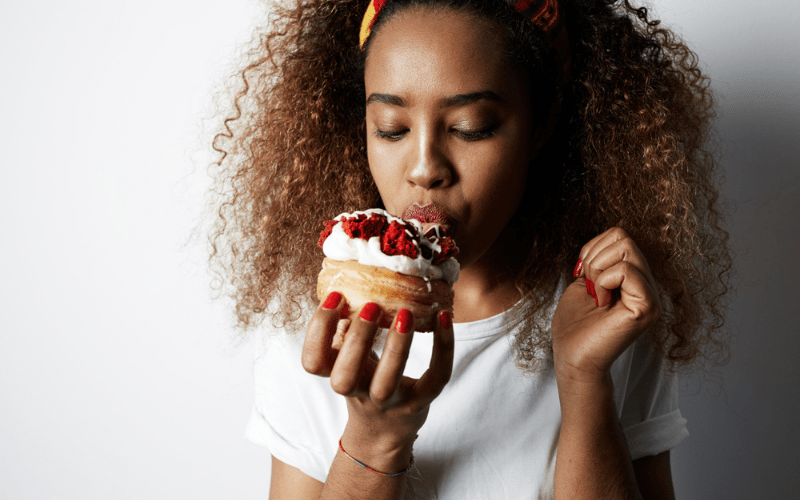Little Luxuries: A Surprising Demand Trend Impacting Category Managers
As I noted in my last blog, record inflation continues to be a significant concern for retailers — because it’s having an enormous and complicated impact on consumer behaviors. Even worse news for retailers? Stressed-out shoppers perceive inflation rates as higher than they actually are. In a recent survey, consumers believed that the annual inflation rate was 17.7%, more than double the actual number. When customers fear inflation, inflation grows.
We’ve seen inflation, and consumers’ fears surrounding it, fuel increased demand for private-label products and other value-driven behaviors. But, an interesting and unexpected trend is also happening: Sales of luxury products are taking off. Cartier’s fourth-quarter 2021 sales are up 30% over the previous year, and Prada’s revenues are 8% higher than pre-pandemic levels. But this isn’t a trend that only impacts the wealthy or traditional luxury brands. Most of us aren’t contemplating buying a luxury car or vacation home, but inflation-influenced buying behavior is impacting the typical retail shopper in smaller ways.
With substantial price increases on everything from gasoline, groceries and utilities to clothing, real estate and vehicles, many customers are worried about staying on track financially. People are cutting back on big expenditures like family vacations to save money and instead buying smaller, less expensive indulgences more often. Being hesitant to spend on travel or dine at a restaurant, consumers instead are “treating themselves” at the grocery store by choosing a more expensive bottle of wine, a box of chocolates or a bouquet of flowers instead. The majority of pet owners (62%) choose to cut back on other expenses to spend money spoiling their pets.
I call this trend “little luxuries” — and it’s one that every category manager needs to understand so they can manage it proactively. While many consumers are turning to coupons, private labels and everyday low pricing due to inflation, there are just as many shoppers having an “I deserve this” moments as they reach for a premium ice cream brand or an upscale lipstick while shopping. Sometimes, you’ll see the same customer during the same shopping trip switching to private-label snack crackers while picking up a more expensive or exclusive brand of cheese, or selecting store brand milk for themselves while grabbing locally-produced organic treats for their dog.
So, what does this mean for retailers and CPG manufacturers? How can category managers sort out and address these conflicting trends in buying behavior? As with nearly everything in life, knowledge is power. Blue Yonder’s smart category management capabilities help retailers notice upticks in luxury product sales at the earliest opportunity, then respond with precise updates for every store location — whether that means changing assortments to add in additional products or modify space and floor plans to adjust facings of existing products.
Enabled by machine learning (ML), Blue Yonder helps retailers pick up on trends as soon as they happen, even if these trends are unexpected, such as in the case of little luxuries. As soon as a change is identified, specific, targeted and localized adjustments can be sent down to impacted stores so they can maximize the opportunity. One store might receive new space plans, another may receive a selection of higher-priced goods to work into the assortment; based upon local buying behavior. Store clustering and planogram automation makes it easy and efficient to manage and deploy these individual updates without burdening corporate planners or store employees.
During the pandemic, both retailers and CPG manufacturers pared down their assortments to minimize risk and keep essential products in stock. Now, as little luxury shopping is beginning to expand, there’s an opportunity to broaden assortments and reintroduce some of these more unique items, or add higher-margin items into the mix to maximize profit potential. But without the insights to identify an uptick in these unexpected items, retailers might keep their assortments minimal and only focus on expanding private label. They might miss this opportunity altogether.
Blue Yonder’s category management dynamic insights continuously monitors luxury-driven purchasing behaviors so retail teams can respond as soon as demand trends change. Because insights are delivered at a granular, localized level, retailers can see which specific luxury items and stores are being affected by this trend. Retailers can change store facings to capture shoppers’ interest, invest in promotional events and otherwise encourage that “I deserve it” moment as often as possible. Customers feel good about treating themselves and feel a connection with the retailer understanding them and retailers capture additional sales of higher-margin items. It’s a win-win.
As we’ve heard over and over, we are truly living in unprecedented times. Retailers must simultaneously satisfy value-seeking consumers and luxury-oriented shoppers. Blue Yonder helps them do both with confidence and precision. By understanding exactly who is shopping their stores and what is motivating them, retailers can successfully engage with these consumers and offer exactly what they’re looking for — driving higher sales and margins, even in a retail environment that continues to surprise us.

